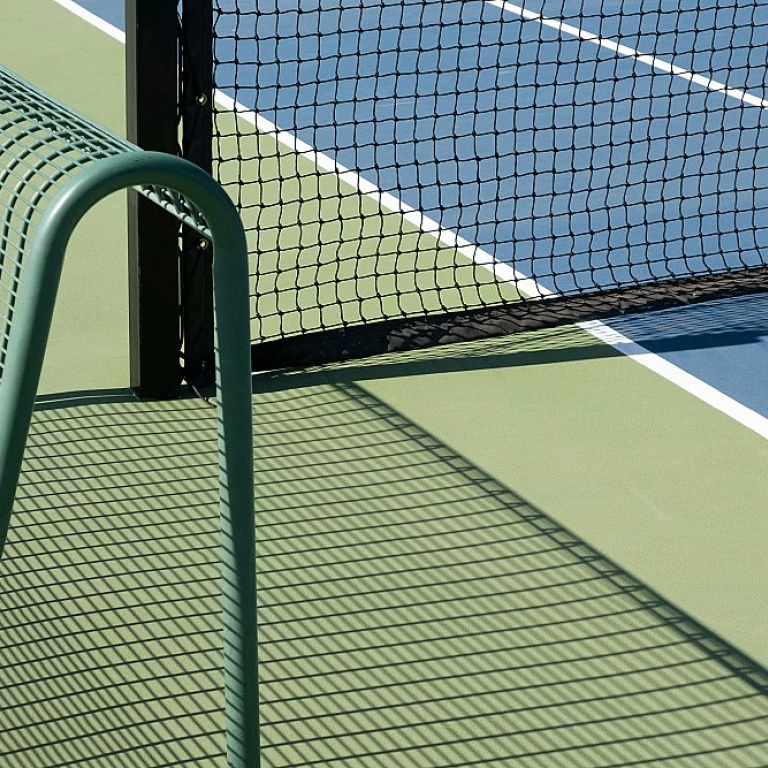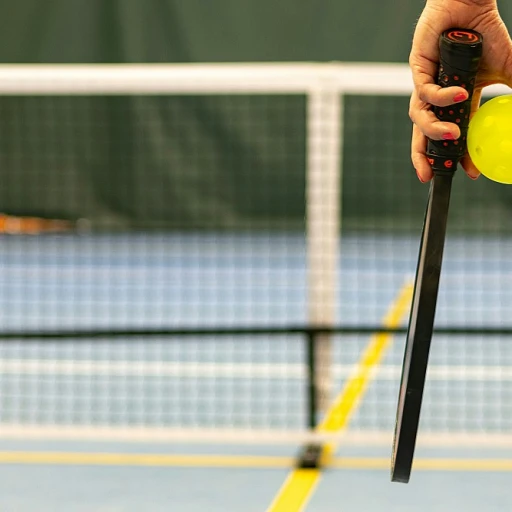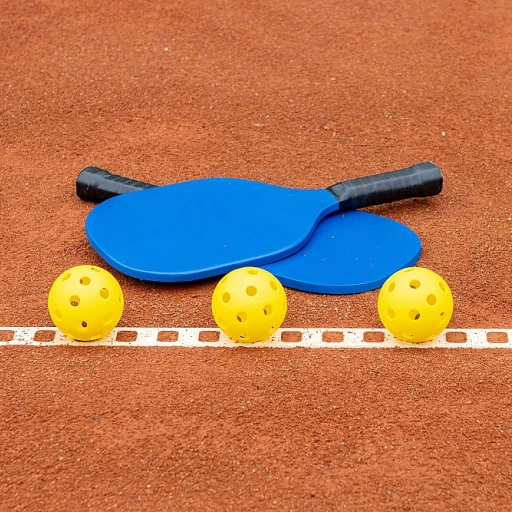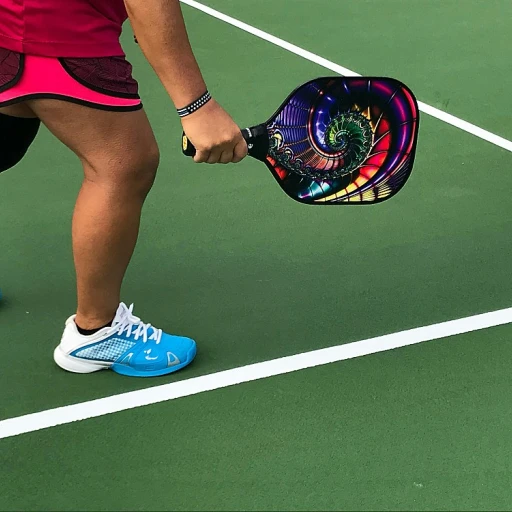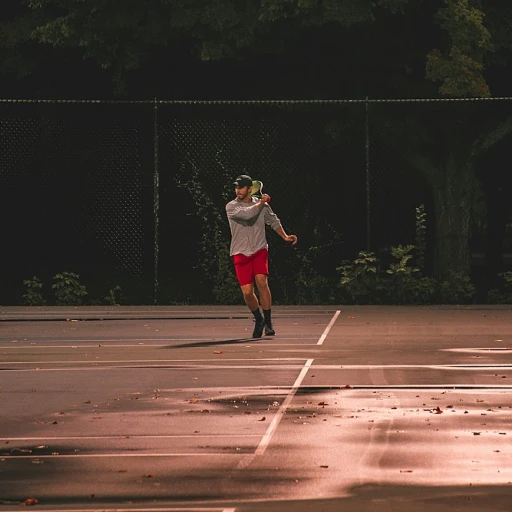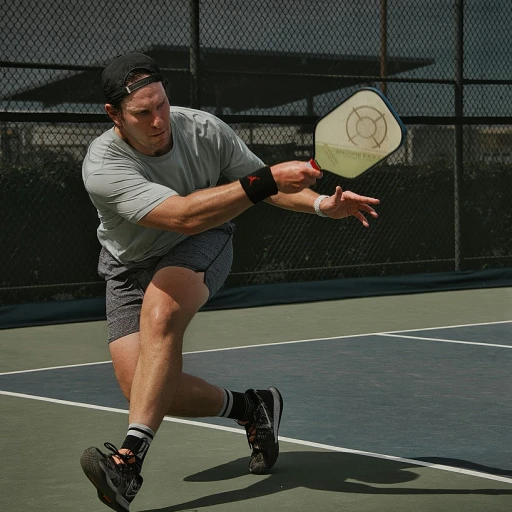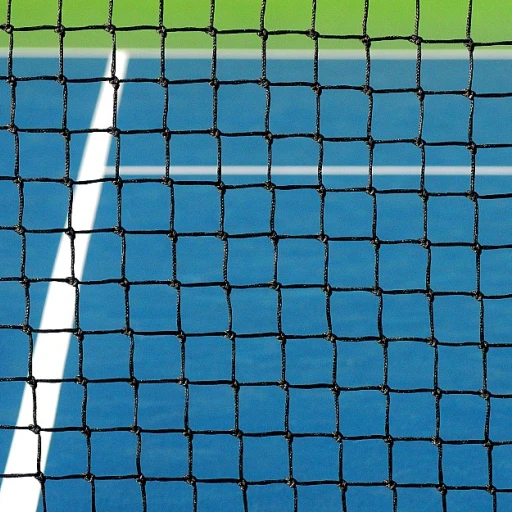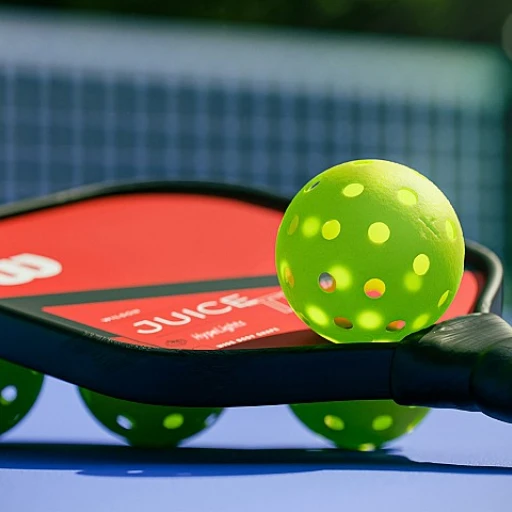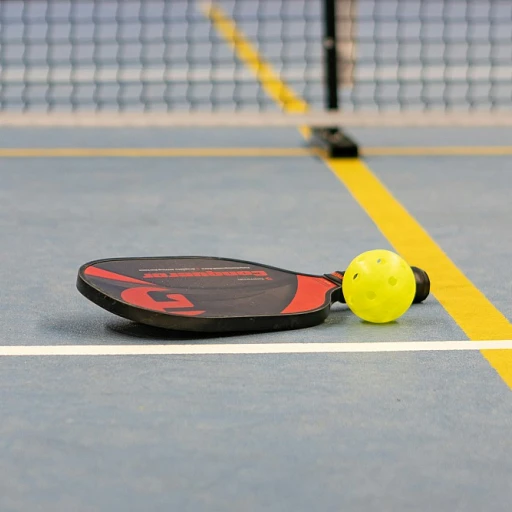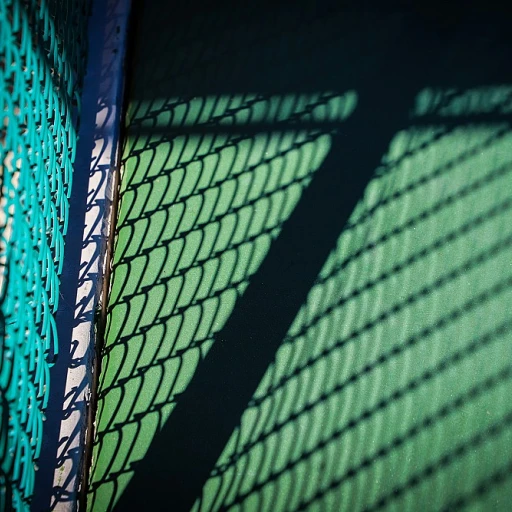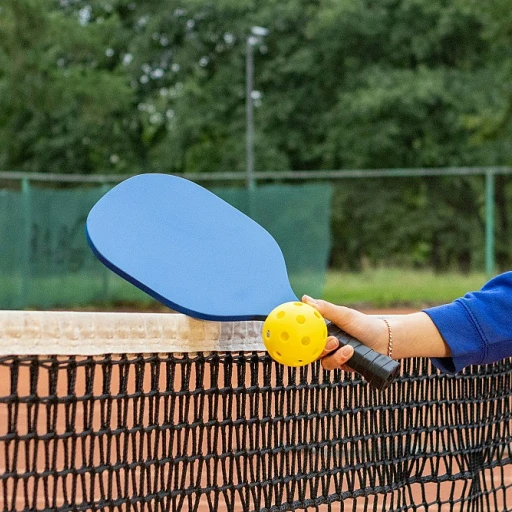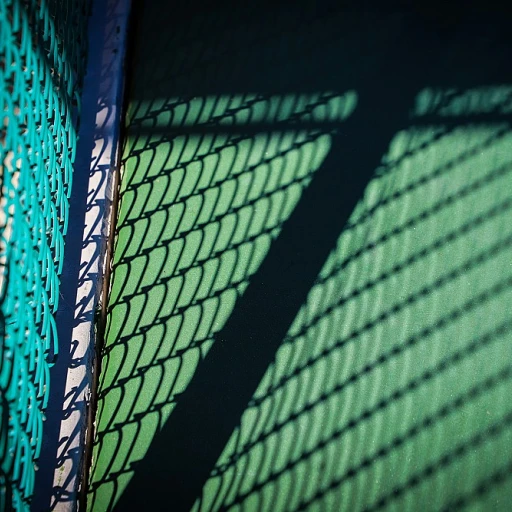
Overview of 6-team pickleball tournaments
Introduction to Six-Team Tournaments
Participating in a six-team pickleball tournament can be an exciting and challenging experience for players. This format allows for varied interactions and matches within a small group, fostering intense competition and camaraderie among the teams. These tournaments typically employ a round-robin format, which offers an opportunity for each team to compete against every other team in its division. This setup ensures that players gain the experience of matching skills with different opponents, enhancing their game. The beauty of the six-team format lies in its structure, which often guarantees each team a minimum of three games. This guarantee is appealing to players who are keen on maximizing their time on the pickleball court. More importantly, it gives each team a fair shake at testing their capabilities across multiple games, which can be particularly beneficial for less experienced teams seeking to improve their strategies and performance. For more insights into understanding how the three-game guarantee works in pickleball tournaments, you can explore more about it here.Understanding the Tournament Structure
The tournament structure in a six-team format is generally straightforward, yet it requires a clear grasp of the tournament rules and dynamics. Teams play in a round-robin or pool play setup, where each match is crucial for reaching the top positions. While the primary goal is to secure victories, it's essential to pay attention to pool standings as they can determine the pathway to potential winner bracket matches. The tournament director plays a vital role in organizing the schedule and ensuring adherence to regulations. As players will be actively engaged in multiple games, understanding the flow of matches—such as the transition between single and double elimination rounds—paves the way for strategic planning and team coordination. By familiarizing oneself with the unique nature of six-team tournaments, players can enhance their overall experience and performance on the pickleball court.Rules and regulations specific to 6-team tournaments
Guidelines for a Thriving Tournament Experience
Participating in a 6-team pickleball tournament presents its own set of rules and dynamics, which both organizers and players should be aware of to ensure fair play and an enjoyable event. When teams gear up for these matches, they follow specific tournament rules designed to create a seamless experience from the first serve to the final match. The tournament typically embraces a round robin format where each team faces every other team. This ensures that all players will have an ample opportunity to demonstrate their skills across different games. The balance of competition and camaraderie is fostered in these formats, making each match an opportunity to refine tactics and enhance team camaraderie. In these tournaments, the pickleball court becomes a battleground of strategy and endurance. Each tournament team might face variations in rules such as rally scoring, where every rally results in a point for one team. This is particularly important in maintaining game momentum and ensuring matches are kept on schedule. Another integral component is understanding the game guarantee aspect. With a 3-game guarantee, every team is assured the chance to play a minimum of three games, adding a layer of reliability to player expectations. This aspect safeguards against the disappointment of an early exit due to single or double elimination formats. Prior to the start of the tournament, the division of teams is essential. A clear format needs to be established by the tournament director. Players often find themselves in a 'pool play' scenario, which serves to rank teams before heading into the winner bracket for the knockout stages. To better understand these rules and how they translate on the pickleball court, you can refer to this comprehensive guide on the pickleball ratings chart, providing insights into how teams are scored and evaluated throughout the tournament: Pickleball Ratings Chart. Ultimately, the success of the tournament lies in its adherence to established rules and the capability of players to adapt and thrive within these frameworks. Being well-prepared in this regard can make for a smoother journey to victory and beyond.Strategies for success in a 3-game guarantee format
Mastering the Triad: Strategies for a Guaranteed Three Games
In six-team pickleball tournaments, adopting a robust strategy is crucial for ensuring success in the three-game guarantee format. This tournament model requires players to be adept at handling the varying dynamics of different matches to enhance their chances of advancement. Here are some essential strategies to consider:1. Understanding the Format:
In a 3-game guarantee format, teams are assured the opportunity to play a minimum of three matches. This layout often follows a round robin structure, allowing teams to compete against several opponents. Understanding the tournament rules, including rally scoring and the divisions involved, provides a competitive edge and reduces the likelihood of disqualification due to technical errors.
2. Efficient Time Management on Court:
Time management is a critical element, as the clock is always ticking in tournament play. Players should ensure they arrive at their pickleball court well before the prior start of their match. This not only gives them ample time for a warm-up but also ensures familiarity with the volley zone and any unique elements of the court. Such preparedness can often make the difference between a win and a loss.
3. Effective Team Coordination:
Pickleball is not just a game of individuals but also of cohesive teams. It's pivotal for each player team to clearly define roles. Strong communication can mitigate overlaps in areas like double coverage or missed shots. A well-synchronized team will outplay opponents who rely merely on individual skill.
4. Embrace Flexibility:
Given that tournaments can swing unpredictably, adaptability is key. Teams that can swiftly adjust their strategies based on the opposing team's tactics and previous matches are likely to excel. This may involve shifting from a defensive mode to a more aggressive stance depending on the unfolding dynamics on the court.
5. Learning from Each Match:
Every game in a three-match guarantee setting offers valuable insights. Analyzing each match, including losses, allows players to recognize patterns and understand areas requiring improvement. This iterative process fosters refinement in skills and can greatly enhance performance throughout the tournament.
To further refine your strategy, it might be helpful to explore more insights into the 3-game guarantee format, which delves deeper into this unique tournament model.
Team dynamics and player roles
Understanding Team Interactions and Player Roles
Effective team dynamics are crucial in any pickleball match, especially in a 6-team tournament format with a 3-game guarantee. As teams navigate through pool play and possibly round robin setups, understanding each player’s role becomes vital to their success on the pickleball court.
In a pickleball tournament setting, such as those outlined in prior sections, the unique framework of the game heavily relies on the synergy between team members. Whether it’s strategizing for the winner bracket or managing fatigue during back-to-back matches, players will benefit from a clear definition of responsibilities:
- Communicator: One player should be designated as the primary communicator. This player keeps the team informed about on-court situations and strategies during a match.
- Strategist: Either player or the team as a whole could adopt this role, focusing on positioning, shot selection, and adaptation to the opponents' weaknesses.
- Supporter: Beyond court skills, emotional support and positive reinforcement from team members can significantly influence performance, especially in the pressure situations common to tournament formats.
By promoting these roles, teams can enhance their overall cohesion, minimize misunderstandings, and streamline decision-making during intense games. During a pickleball tournament where time constraints are prevalent, such coordination allows players to maintain focus and optimize their performance on the court.
Common challenges and how to overcome them
Tackling Common Obstacles in Tournament Settings
Participating in a 6-team pickleball tournament often presents a unique array of challenges. Understanding these potential hurdles and planning accordingly can make a significant difference in performance and result. One frequent issue is managing the diverse nature of the round robin format. Players must swiftly adapt to different styles and strategies with each match. This adaptability is crucial, as matches in such tournaments have varied skill levels and tactics. Team dynamics also play a critical role. Each player must communicate effectively and align on the same goals, especially given the unique player roles within a team game. Confusion or lack of cohesion can hinder performance, impacting the team's standing in the tournament. Time management stands out as another challenge. With a 3-game guarantee format, conserving energy and pacing yourself throughout the three games is essential for maintaining play quality. Initially, excitement and adrenaline might push players to overexert, but strategic planning can help prevent early fatigue. Unexpected court conditions or variable pickleball court surfaces might also present an issue. Players should be prepared for adjustments and look to the tournament director for any last-minute rule adaptations. Familiarizing with common changes in softball or double elimination setups prior start is beneficial. Lastly, understanding the tournament rules cannot be overlooked. Familiarity with rally scoring, single elimination, and the intricacies of the volley zone can provide a tactical edge. Engaging with fellow players for advice and insights before the tournament can also be invaluable. In overcoming these challenges, it is essential to remain flexible, support team collaboration, and stay informed about the tournament's design. Such preparations strongly contribute to a team’s potential path through the winner bracket in a pickleball tournament.Insights from seasoned pickleball players
Perspectives from Experienced Players
Gaining insights from seasoned pickleball players can make a substantial difference for teams participating in these tournaments. Experienced players often emphasize the importance of understanding both the specific rules and dynamics of smaller tournaments and the format of a 3-game guarantee. The knowledge of officiating and player conduct within these unique tournament frameworks is crucial.- Adaptability to Tournament Formats: Skilled players highlight the necessity of adapting to different tournament formats, such as round-robin or double elimination. Moving through the ranks of a winner bracket or facing off in a single elimination match requires a strategic mindset and an understanding of the necessary game play adjustments.
- Emphasizing Team Cohesion: Veteran players also stress the significance of team dynamics. Each player within a team must understand their roles on the court, from the volley zone to ensuring optimal coordination during rallies. This coordination often translates into success in both team games and individual matches.
- Learning from Challenges: Common challenges, such as navigating the time limits of court play or adjusting to specific pickleball court conditions, are also part of the learning curve. Experienced participants advise teams to treat every challenge as a learning opportunity, helping players not only to improve their own performance but to strategize better as a unit.

